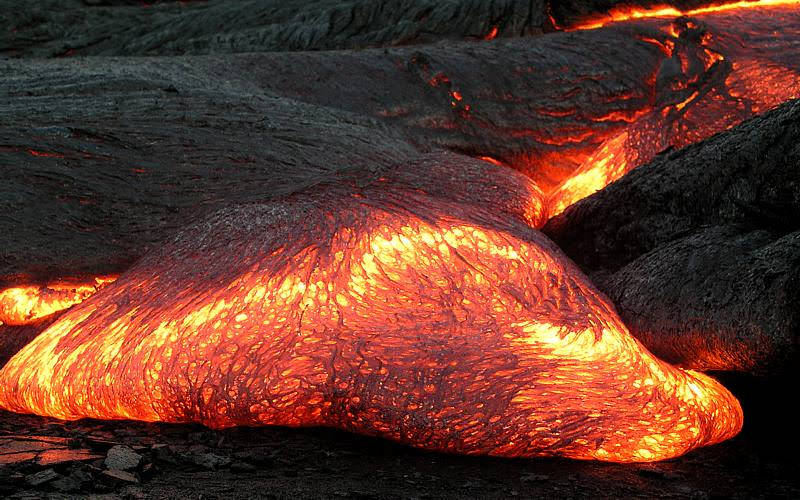[/caption]
Basalt is a hard, black volcanic rock with less than 52% silica. Because of this low silica content, basalt has a low viscosity (thickness), and so it can flow for long distances after erupting from a volcano. During an eruption, a basalt lava flow can easily move more than 20 km away from a vent. Basalt is the most common rock type in the Earth’s crust. In fact, most of the ocean floor is made up of basalt.
Basalt is made up of dark colored materials like pyroxene and olivine, but it also contains lighter minerals like feldspar and quartz. These crystals form because the lava cools slowly after erupting out of a volcano. Although a lava flow might look cool shortly after an eruption, it might take months or even years to cool all the way through. The crystals are bigger in the middle of a cooled lava flow because that part had longer to cool. If a lava flow cools quickly, like when it falls into a lake or ocean, it becomes a glass-like rock called obsidian. This is because the crystals in the rock don’t have time to form.
Shield volcanoes are made up entirely of basalt lava eruptions. A good example of this are the volcanoes Mauna Loa and Mauna Kea on the Big Island of Hawaii. Over hundreds of thousands of years, they have built up tall volcanoes that are extremely wide because of the fast flowing basalt lava.
Geologists have found large outpourings of lava covering hundreds of kilometers of land called flood basalt. The largest of these is known as the Siberian Traps in northern Russia. This is a region of 1.5 million square kilometers covered by basalt.
We have written many articles about volcanoes for Universe Today. Here’s an article about obsidian, and here’s an article about different types of lava.
Want more resources on the Earth? Here’s a link to NASA’s Human Spaceflight page, and here’s NASA’s Visible Earth.
We have also recorded an episode of Astronomy Cast about Earth, as part of our tour through the Solar System – Episode 51: Earth.



